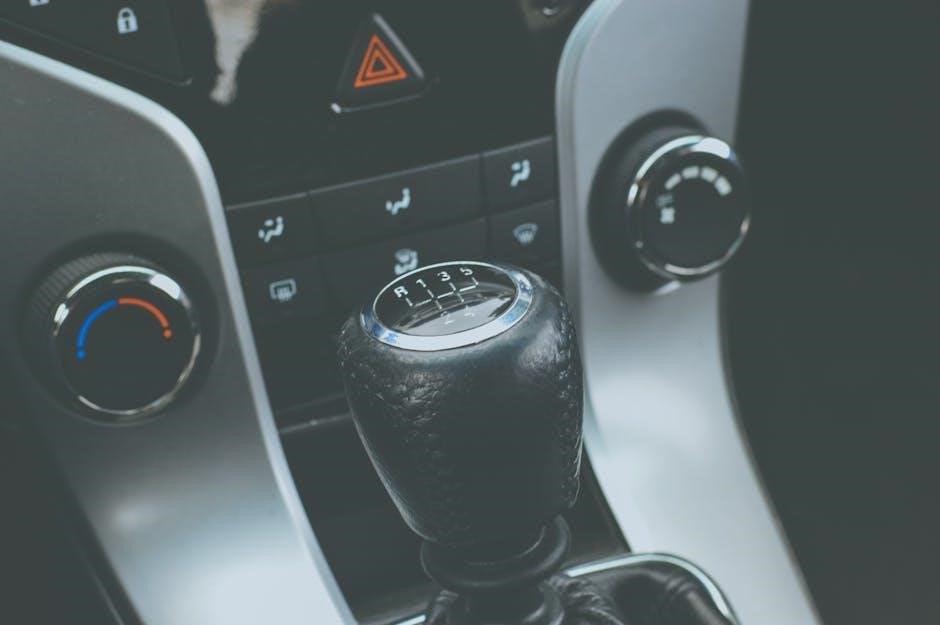Manual to automatic conversion is a growing trend for drivers seeking convenience and ease. It involves replacing a manual gearbox with an automatic system, offering smoother operation and reduced driver fatigue. While the process is complex and costly, modern advancements have made it more accessible. This guide explores the ins and outs of this transformation, helping you decide if it’s right for your vehicle.
1.1 Overview of Manual and Automatic Transmissions
Manual transmissions require driver interaction via a clutch pedal and gearshift, offering control and fuel efficiency. Automatic transmissions, using a torque converter, shift gears automatically, reducing driver effort. While manuals are less common in modern vehicles, automatics dominate the market, especially in North America, for their convenience and ease of use in stop-and-go traffic. Both systems have distinct mechanisms and benefits, catering to different driving preferences and needs.
1.2 Importance of Transmission Conversion
Transmission conversion from manual to automatic enhances driving convenience, especially in urban conditions. It reduces fatigue, improves accessibility for novice drivers, and offers smoother acceleration. Modern vehicles increasingly favor automatics, making conversion a viable option for older or specific models. Additionally, automatic transmissions can improve resale value and cater to evolving driver preferences, providing a balance between performance and comfort. This shift aligns with technological advancements and changing market demands, making it a significant consideration for car owners.
Understanding the Manual to Automatic Conversion Process
Converting a manual to an automatic involves assessing the vehicle, selecting the right transmission, and installing components like ECUs and shifters. It requires mechanical expertise and precision to ensure a seamless transition, offering improved drivability and convenience.
2.1 Initial Assessment of the Vehicle
The first step in manual to automatic conversion is evaluating the vehicle’s compatibility. Mechanics inspect the engine, chassis, and existing transmission to determine suitability. Factors like engine power, vehicle weight, and intended use are considered to choose the right automatic gearbox. Modern cars may require additional components, such as an ECU, to ensure proper integration. This assessment is crucial to avoid costly mistakes and ensure a smooth conversion process.
2.2 Selecting the Right Automatic Transmission
Selecting the appropriate automatic transmission is pivotal for a successful conversion. The transmission must align with the vehicle’s engine specifications, torque output, and weight. Factors such as gear ratios, oil cooler requirements, and electronic compatibility are evaluated. Popular options include refurbished OEM units or aftermarket gearboxes like the Tremec 3650. Proper selection ensures optimal performance, fuel efficiency, and longevity of the system. Consulting with a professional is recommended to make an informed decision.
2.3 Key Components Required for Conversion
The conversion process requires specific components, including an automatic transmission gearbox, torque converter, and electronic control unit (ECU). A shifter assembly, transmission mounts, and modified wiring harness are also essential. Additionally, a compatible transmission cooler and updated drivetrain components may be needed. The ECU must be reprogrammed to support automatic shifting, ensuring smooth operation. Each part must be carefully selected to match the vehicle’s specifications for optimal performance and reliability.

Cost and Feasibility of Manual to Automatic Conversion
Manual to automatic conversion is expensive and complex, often costing thousands of dollars. The process requires specialized tools and expertise, making it less feasible for many vehicles. While it offers convenience, the high costs may outweigh benefits unless absolutely necessary. For many, purchasing a pre-equipped automatic vehicle is more economical than converting an existing manual one.
3.1 Estimated Costs for Parts and Labor
Manual to automatic conversion costs can range from $2,000 to $10,000 or more, depending on the vehicle and transmission type. Parts include a compatible automatic gearbox, ECU, and additional components like sensors and wiring. Labor costs are significant, as the process requires specialized expertise. Average labor fees for such conversions can exceed $3,000, with total expenses often surpassing $5,000 for basic setups. High-performance or custom conversions can double these figures. Costs vary widely, so obtaining detailed quotes is essential for accurate planning.
3.2 Is Manual to Automatic Conversion Worth It?
Manual to automatic conversion can be worthwhile for drivers seeking convenience and ease, especially in heavy traffic. It offers smoother acceleration and reduces driver fatigue. However, the high cost and complexity often make it less practical for budget-conscious owners. For enthusiasts who value driving control, sticking with manual may be preferable. Ultimately, the decision depends on personal preferences, budget, and the vehicle’s intended use. Weighing these factors helps determine if the conversion aligns with your needs and expectations.
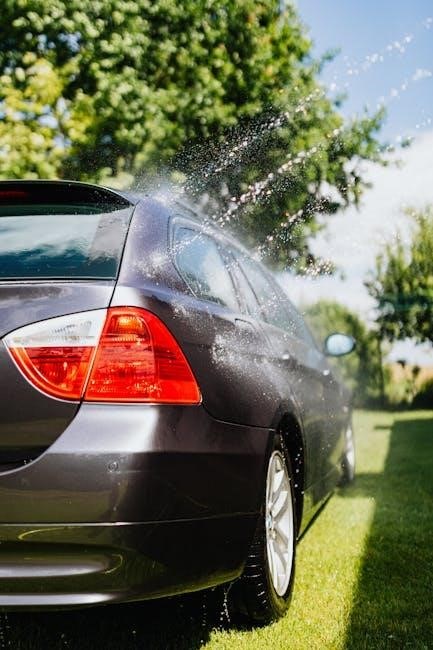
Methods of Manual to Automatic Conversion
Common methods include replacing the manual transmission with an automatic gearbox, installing a Gear Vendors overdrive unit, or regearing the axles for improved performance and compatibility.
4.1 Replacing the Manual Transmission with an Automatic Gearbox
Replacing the manual transmission with an automatic gearbox is a direct approach, requiring precise compatibility checks. The process involves removing the manual unit and installing a matched automatic transmission. This method ensures seamless integration with the vehicle’s engine and drivetrain. The automatic gearbox must be compatible with the car’s make, model, and engine specifications to maintain optimal performance and avoid mechanical issues. Professional expertise is often necessary for this complex swap.
4.2 Using a Gear Vendors Overdrive Unit
Installing a Gear Vendors overdrive unit offers a cost-effective alternative to a full transmission swap. This unit adds an overdrive gear to the existing manual transmission, enhancing performance and fuel efficiency without replacing the entire system. It is often preferred for its simplicity and compatibility with various vehicles. The installation process is less invasive, reducing labor costs and downtime. This method is particularly popular for classic cars and off-road vehicles, providing a balance between manual control and improved functionality.
4.3 Regearing the Axles for Better Performance
Regearing the axles is a popular method to optimize performance after a manual-to-automatic conversion. This process involves adjusting the axle ratios to better suit the new automatic transmission, enhancing acceleration and fuel efficiency. Typically costing around $1,000 per axle, it ensures smoother power delivery and improved drivetrain harmony. While optional, regearing is highly recommended for vehicles requiring enhanced performance, especially in specific driving conditions like off-road or heavy-duty use, making it a worthwhile investment for optimal results.

Legal and Insurance Considerations
Converting a manual to automatic transmission requires legal approvals and updated documentation. Insurance premiums may increase, so notify your provider to ensure coverage aligns with the new system.
5.1 Legal Requirements for Transmission Conversion
Legal requirements for transmission conversion vary by region, ensuring safety and compliance. Modifications must meet local regulations, often requiring inspection and certification. Documentation, such as updated vehicle registration, is mandatory. Failure to comply can result in legal penalties or fines. Consulting local authorities or certified professionals is essential to navigate these requirements successfully and avoid potential issues post-conversion.
5.2 Impact on Vehicle Insurance
Converting a manual to an automatic transmission can affect your vehicle insurance. Insurance companies may view automatic transmissions as safer, potentially lowering premiums. However, the cost of the conversion itself could increase the vehicle’s value, leading to higher insurance rates. It’s essential to notify your insurer about the modification, as failure to do so might void your policy. Some insurers offer discounts for automatic vehicles, while others may adjust rates based on the conversion’s complexity and your driving history.
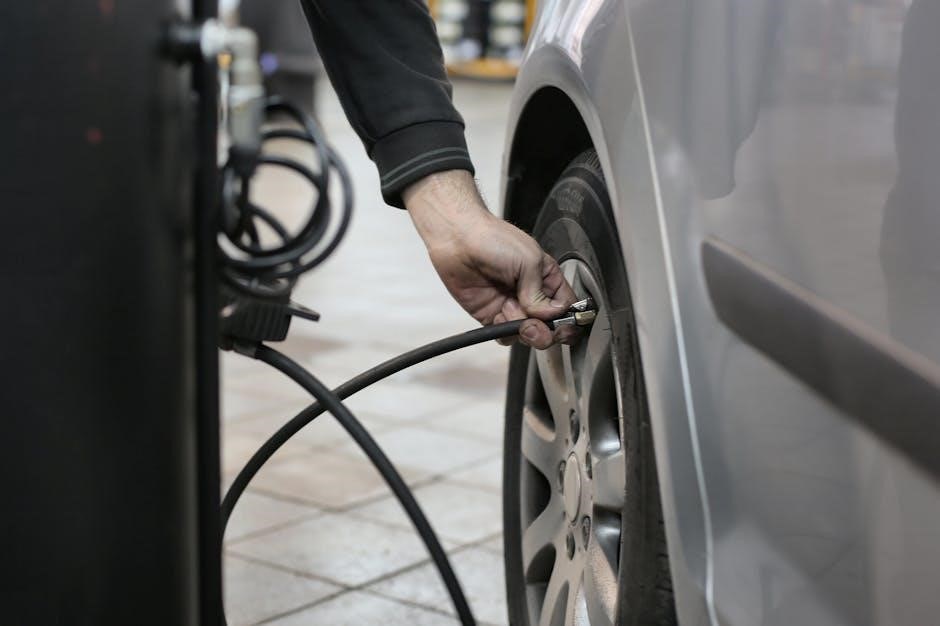
Maintenance and Upkeep After Conversion
Regular servicing is crucial after converting to automatic. Ensure fluid changes, filter replacements, and monitor transmission health to prevent issues. Follow manufacturer schedules for optimal performance.
6.1 Regular Servicing of the Automatic Transmission
Regular servicing is essential for maintaining the health of your automatic transmission post-conversion. This includes fluid changes, filter replacements, and inspections of key components like the torque converter and cooler lines. Ensuring the transmission pan is clean and free of debris is also crucial. Routine checks help prevent major repairs and extend the lifespan of your transmission, ensuring smooth and reliable performance over time.
6.2 Common Issues Post-Conversion
Post-conversion, common issues may arise, such as compatibility problems between the new automatic transmission and existing vehicle systems. Shifting difficulties, slipping, or delayed engagement can occur if the ECU is not properly calibrated. Additionally, torque converter malfunctions or fluid leaks from newly installed components may surface. These issues highlight the importance of precise installation and regular maintenance to ensure optimal performance and reliability of the converted transmission system.
Case Studies and Real-World Examples
Real-world examples, such as the Volvo Cross Country and Ford Mustang conversions, demonstrate successful transitions from manual to automatic. These case studies highlight practical benefits and challenges.
7.1 Successful Manual to Automatic Conversions
A Volvo Cross Country successfully transitioned from a failed AW55 automatic to a manual setup, restoring reliability. A Ford Mustang GT swapped its 5R55S automatic for a Tremec 3650 manual, enhancing performance. Similarly, a Tata Indigo was converted to automatic at a specialized workshop, proving feasibility. These examples highlight how careful planning and professional execution lead to successful outcomes, whether for daily driving or performance enhancement.
7.2 Lessons Learned from Failed Conversions
Failed conversions often stem from high costs, complexity, and incompatibility. DIY kits frequently underperform, and improper ECU configurations can disrupt vehicle functioning. Overlooking transmission and engine alignment leads to mechanical issues. Modern cars with advanced systems are particularly challenging. These setbacks highlight the need for professional expertise and thorough planning to avoid costly mistakes and ensure a smooth transition.

Pros and Cons of Manual to Automatic Conversion
Automatic transmissions offer convenience and ease, reducing driver fatigue. However, they can be costly to install and may lower fuel efficiency, making the trade-off crucial.
8.1 Advantages of Automatic Transmissions
Automatic transmissions provide unparalleled convenience, eliminating the need for manual gear shifts. They reduce driver fatigue, especially in heavy traffic, and offer smoother acceleration. New drivers find them easier to operate, and modern automatics often include advanced features like seamless shifting and adaptive control. Additionally, automatics are ideal for urban driving, where frequent stops and low-speed maneuvers are common, enhancing overall comfort and performance.
8.2 Disadvantages of Converting Manual to Automatic
Converting a manual to an automatic transmission is often costly and technically complex. It may require additional components like ECUs and wiring, increasing expenses. Performance can suffer, as automatics may lack the precision of manual shifting. Fuel efficiency might also decrease, especially in vehicles optimized for manual transmissions. Additionally, the process can void warranties and may not always enhance driving dynamics, making it a less appealing option for enthusiasts who value control and responsiveness.
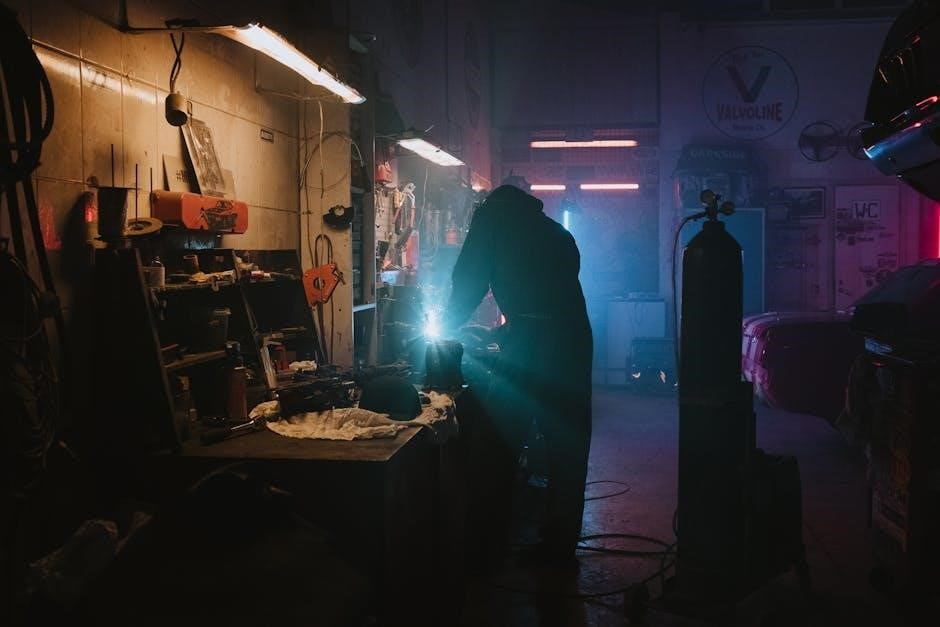
Modern Alternatives to Manual to Automatic Conversion
Modern alternatives include intelligent manual transmissions (iMT) and automated manual transmissions (AMT), offering the best of both worlds with clutch-free driving and improved fuel efficiency effortlessly.
9.1 iMT (Intelligent Manual Transmission)
Intelligent Manual Transmission (iMT) combines the simplicity of a manual gearbox with clutch-free operation, offering a seamless driving experience. It eliminates the clutch pedal while retaining manual shifting, enhancing convenience without sacrificing driver engagement. This technology is ideal for urban commuting, reducing fatigue in heavy traffic. iMT systems integrate advanced electronics to synchronize gear shifts, providing smooth transitions and improved fuel efficiency. As a modern alternative to full automatic conversions, iMT strikes a balance between traditional driving feel and contemporary comfort.
9.2 Automated Manual Transmissions (AMT)
Automated Manual Transmissions (AMT) use mechanical components to automate gear shifts without a clutch pedal, blending manual and automatic features. AMTs are cost-effective and fuel-efficient, ideal for budget-conscious drivers. They retain the simplicity of manual systems while offering clutch-free operation, reducing driver effort. However, AMTs may lack the smoothness of traditional automatics, leading to slight hesitation between shifts. Despite this, they remain a popular choice for those seeking a middle ground between manual and automatic driving experiences.
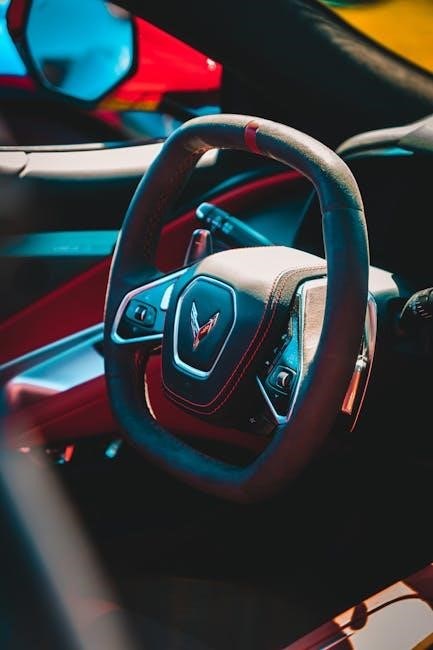
DIY vs Professional Conversion
Manual to automatic conversion can be done as a DIY project or by professionals. DIY kits are cost-effective for enthusiasts but require technical expertise, while professionals ensure reliability and safety, especially for complex systems.
10.1 DIY Conversion Kits and Their Limitations
DIY conversion kits offer a cost-effective solution for manual to automatic transmission swaps. These kits typically include essential components like the automatic gearbox, ECU, and shifter. However, they often lack comprehensive instructions, requiring advanced mechanical skills. Compatibility issues with existing vehicle systems are common, and improper installation can lead to costly repairs. Additionally, warranties are usually voided, and long-term reliability may be compromised compared to professional installations.
10.2 Hiring a Professional Mechanic or Workshop
Hiring a professional mechanic or workshop ensures expertise and reliability in manual to automatic conversions. They possess specialized tools, knowledge, and experience to handle complex processes, including ECU reprogramming and system integration. While more expensive than DIY kits, professional services minimize risks of errors and ensure optimal performance. Many workshops offer warranties, providing peace of mind. Their extensive experience with various vehicle models guarantees a seamless transition, making them the preferred choice for a successful and durable conversion.

The Role of Technology in Manual to Automatic Conversion
Technology plays a pivotal role in enabling smooth manual to automatic conversions, with advanced ECUs and transmission systems ensuring seamless integration and optimal performance.
11.1 Electronic Control Units (ECU) for Smooth Transition
Electronic Control Units (ECUs) are crucial for a seamless manual to automatic conversion. They synchronize engine and transmission operations, ensuring smooth gear shifts and optimal performance. Modern ECUs adapt to driving conditions, enhancing efficiency and responsiveness. By integrating advanced algorithms, they minimize mechanical stress and improve fuel efficiency. Proper ECU configuration and calibration are essential for a successful conversion, making them a cornerstone of modern transmission technology.
11.2 Advanced Transmission Systems
Advanced transmission systems play a pivotal role in manual to automatic conversions, offering enhanced performance and efficiency. Modern systems like dual-clutch transmissions and continuously variable transmissions (CVTs) provide smoother gear shifts and improved fuel economy. These systems integrate seamlessly with ECUs, ensuring optimal power delivery and reduced mechanical stress. Features such as paddle shifters and adaptive learning capabilities further elevate the driving experience. By leveraging cutting-edge technology, advanced transmission systems make the conversion process more efficient and the resulting vehicle more enjoyable to drive.
Environmental Impact of Manual to Automatic Conversion
Manual to automatic conversion can influence fuel efficiency and emissions. Automatic transmissions often reduce fuel consumption, lowering emissions and promoting eco-friendly driving. This shift supports environmental sustainability goals.
12;1 Fuel Efficiency Post-Conversion
Converting a manual to an automatic transmission can lead to improved fuel efficiency, particularly in stop-and-go traffic. Modern automatic transmissions, with features like continuous torque conversion and optimized gear ratios, often reduce fuel consumption. However, the extent of improvement depends on driving conditions and vehicle type. Older manual transmissions may still be more fuel-efficient in certain scenarios, but advancements in automatic technology have narrowed this gap significantly over the years.
12.2 Emissions and Environmental Considerations
Converting a manual to an automatic transmission can lower emissions by improving combustion efficiency and reducing unnecessary fuel burn. Modern automatics often feature advanced technologies like lock-up torque converters and adaptive shift strategies, which minimize environmental impact. However, the conversion process itself may generate waste and require energy-intensive manufacturing of new components. While automatics can be more eco-friendly in urban driving, older manual transmissions might still outperform them in specific conditions, making the environmental benefits context-dependent.
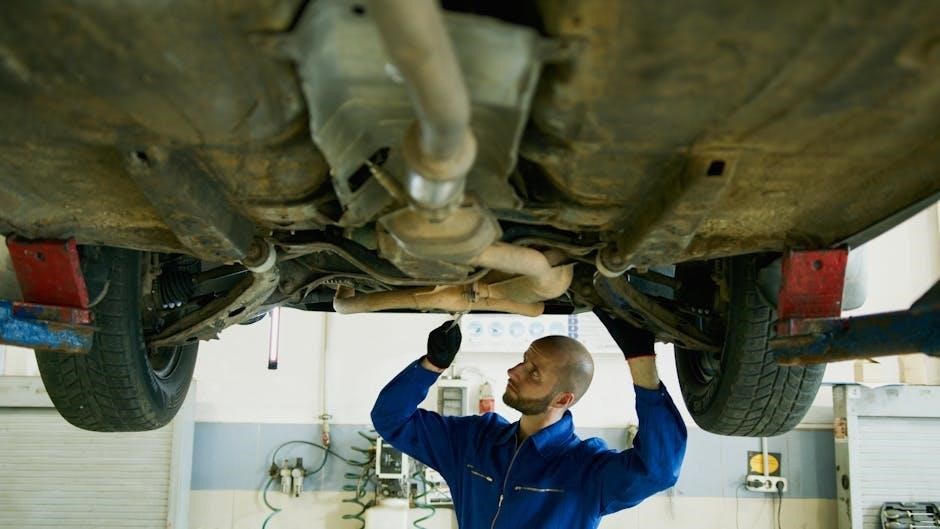
The Future of Manual to Automatic Conversion
Advancements in transmission technology and electric vehicles are reshaping manual to automatic conversions, offering smarter, more efficient solutions for modern drivers and environmentally friendly alternatives.
13.1 Emerging Trends in Transmission Technology
Emerging trends in transmission technology are revolutionizing manual to automatic conversions, with advancements like dual-clutch systems and AI-driven gear shifts enhancing performance and efficiency. Modular conversion kits and plug-and-play solutions are becoming popular, reducing installation complexity. Additionally, hybrid and electric transmission systems are gaining traction, offering sustainable alternatives. These innovations are making conversions more accessible, efficient, and environmentally friendly, catering to the growing demand for smooth and hassle-free driving experiences in modern vehicles.
13.2 The Rise of Autonomous Vehicles
The rise of autonomous vehicles is reshaping the automotive industry, influencing manual to automatic conversion trends. Autonomous systems rely on seamless, precise control, making automatic transmissions more compatible. As self-driving technology advances, manual transmissions may become obsolete, driving demand for conversions. This shift aligns with autonomous vehicles’ need for efficient, hands-free operation, potentially accelerating the adoption of automatic systems in future mobility solutions.
Manual to automatic conversion offers a blend of convenience, performance, and modernization, though it requires careful consideration of costs, complexity, and professional expertise to ensure success.
14.1 Final Thoughts on Manual to Automatic Conversion
Manual to automatic conversion is a significant decision that balances convenience, performance, and cost. While it offers smoother driving and reduced fatigue, it also involves technical challenges and expenses. Modern solutions like iMT and AMT provide alternatives, but traditional conversions require professional expertise. Drivers must weigh their needs and budget carefully before proceeding. Ultimately, the choice depends on personal preferences, lifestyle, and the vehicle’s intended use, ensuring the conversion aligns with long-term goals and expectations.
14.2 Recommendations for Potential Converters
Potential converters should thoroughly assess their vehicle’s compatibility and budget before proceeding. Consulting a professional mechanic is crucial to ensure a smooth transition. Research modern alternatives like iMT or AMT for cost-effective solutions. Budget for unexpected expenses and consider the long-term benefits. Prioritize your driving needs and lifestyle to determine if the conversion aligns with your goals. Weigh the pros and cons carefully to make an informed decision that enhances your driving experience while meeting your expectations.
